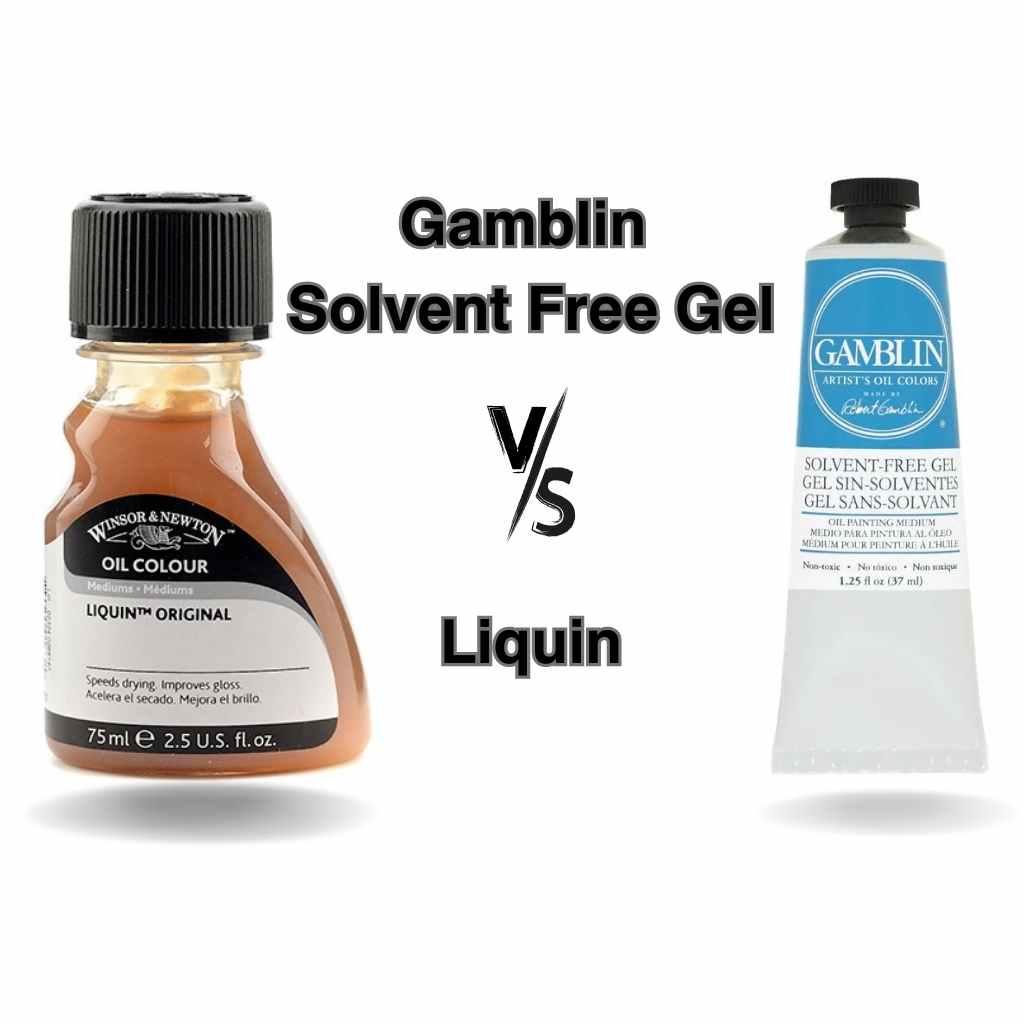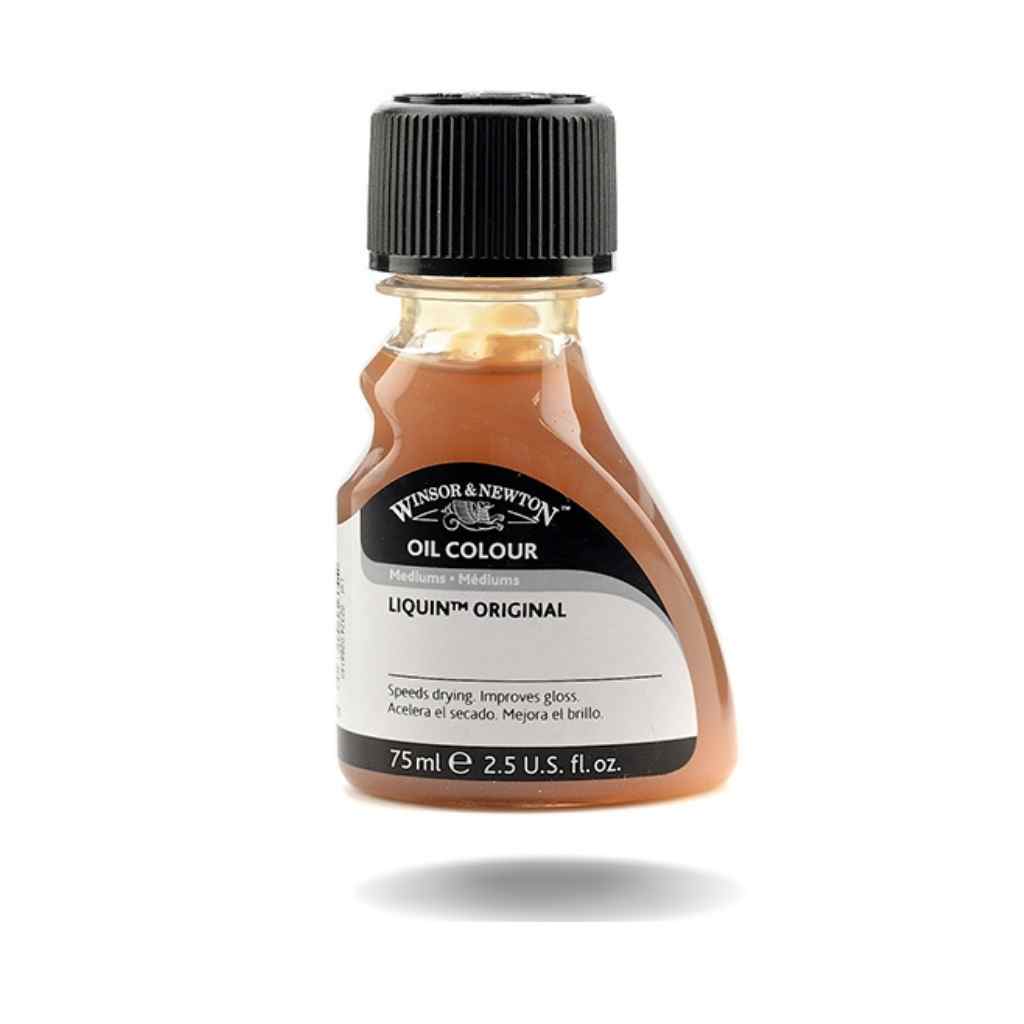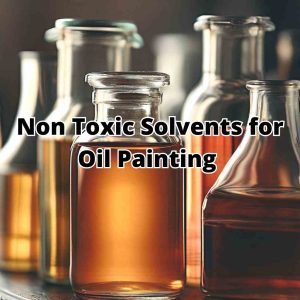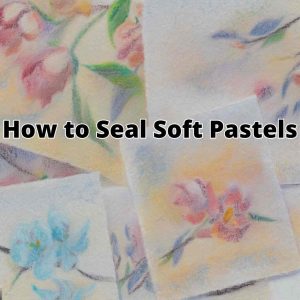Are you an aspiring oil painter seeking to elevate your artistic creations to new heights? Look no further!
In oil painting, the choice of mediums can make all the difference in achieving the desired effects and expressing your creative potential.
Among the many options, two popular contenders gamblin solvent free gel vs liquin vie for the spotlight. But what sets them apart? How can you harness their unique properties to enhance your artwork?
In this post, we dive into the world of gamblin solvent free gel vs liquin, unearthing the secrets behind their mesmerizing qualities.
So, grab your brushes, prepare your palette, and let’s embark on an artistic adventure together!
Gamblin Solvent Free Gel vs Liquin Quick Comparison Chart
Here’s a comparison table for gamblin solvent free gel and liquin for your ease of access:
| Features | Gamblin Solvent Free Gel | Liquin |
| Purpose | Medium for oil painting | Medium for oil painting |
| Body and Brushstrokes | Maintains body and brushstrokes | Enhances flow and leveling |
| Transparency and Gloss | Increases transparency and gloss | Increases transparency and gloss |
| Flow and Leveling | Improves flow and leveling | Enhances flow and leveling |
| Drying Time | Extends drying time | Accelerates drying time |
| Usage | Used directly from the container | Can be mixed with other mediums |
| Comparison with Solvents | Solvent-free, safer alternative | Contains solvents |
| Application Techniques | Suitable for a variety of techniques | Suitable for a variety of techniques |
| Versatility | Can be used for glazing and impasto | Allows for glazing techniques |
| Compatibility | Compatible with most oil paints | Compatible with most oil paints |
Gamblin Solvent Free Gel
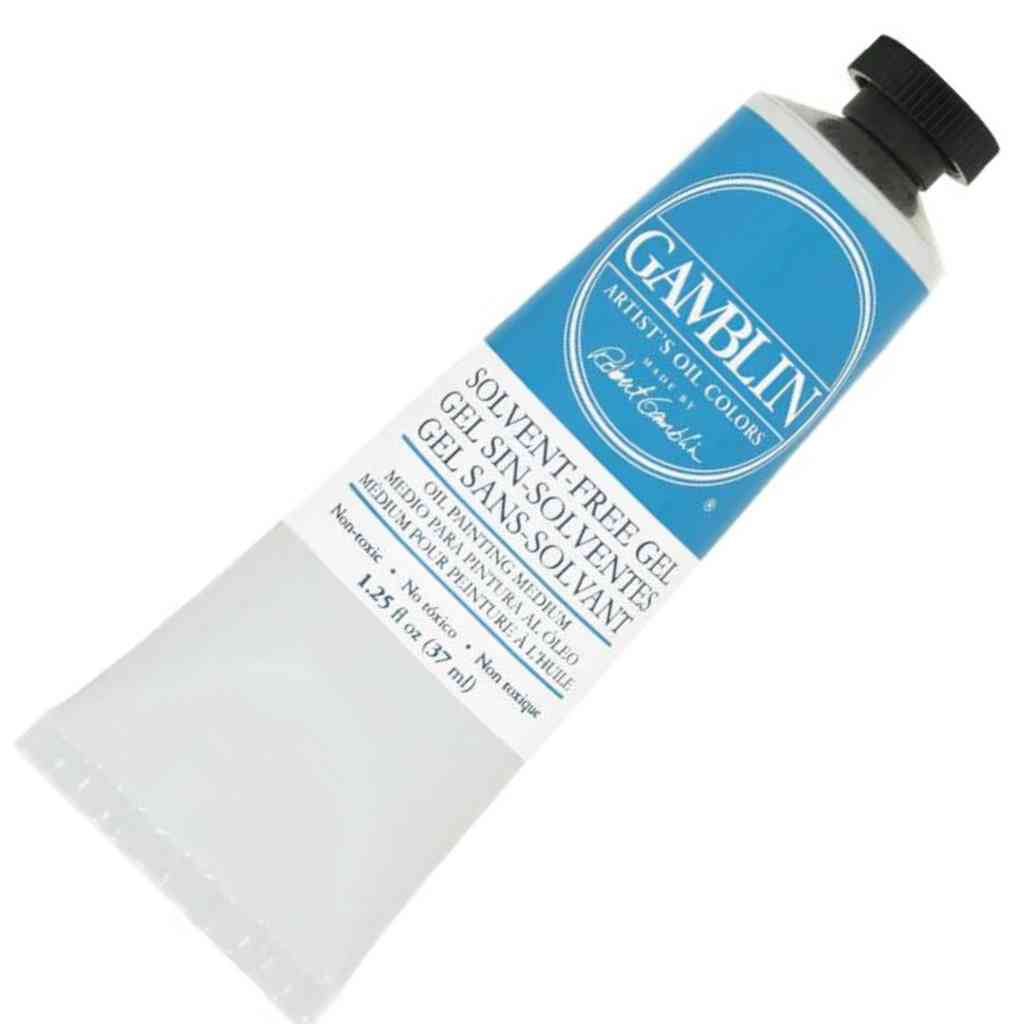
Gamblin solvent free gel is a remarkable medium that has gained popularity among oil painters for its unique characteristics and advantages. This gel-like substance serves as a versatile tool for artists to enhance their artwork.
Benefits of using Gamblin Solvent Free Gel
- Maintains body and brushstrokes: Gamblin solvent free gel preserves the body and texture of the paint, allowing artists to retain the integrity of their brushstrokes.
This ensures that the intended expressive qualities of the artwork are maintained.
- Increases transparency and gloss: By adding gamblin solvent free gel to your oil paints, you can achieve enhanced transparency and glossiness in your artwork.
This quality can be particularly effective in creating luminous effects and highlighting specific areas of your painting.
- Improves flow and leveling: The gel formulation of gamblin solvent free gel promotes smoother flow and improved leveling of the paint.
This allows for easier application and blending of colors, resulting in more seamless transitions and gradients.
- Extends drying time: One notable advantage of gamblin solvent free gel is its ability to extend the drying time of the paint.
This grants artist extended working periods, enabling them to work on intricate details or engage in more complex painting techniques without the worry of rapid drying.
How to use gamblin solvent free gel effectively
To make the most of gamblin solvent free gel, follow these tips and techniques:
- Start with a small amount: Begin by adding a small quantity of gamblin solvent free gel to your paint. You can gradually increase the amount based on the desired effects.
- Experiment with ratios: Explore different ratios of gel to paint to achieve the desired transparency, viscosity, and drying time. Adjust the proportions to suit your specific painting technique and style.
- Mix thoroughly: Ensure that the gel is mixed thoroughly with the paint to achieve a consistent and uniform application. This will prevent any unevenness or clumping in the final result.
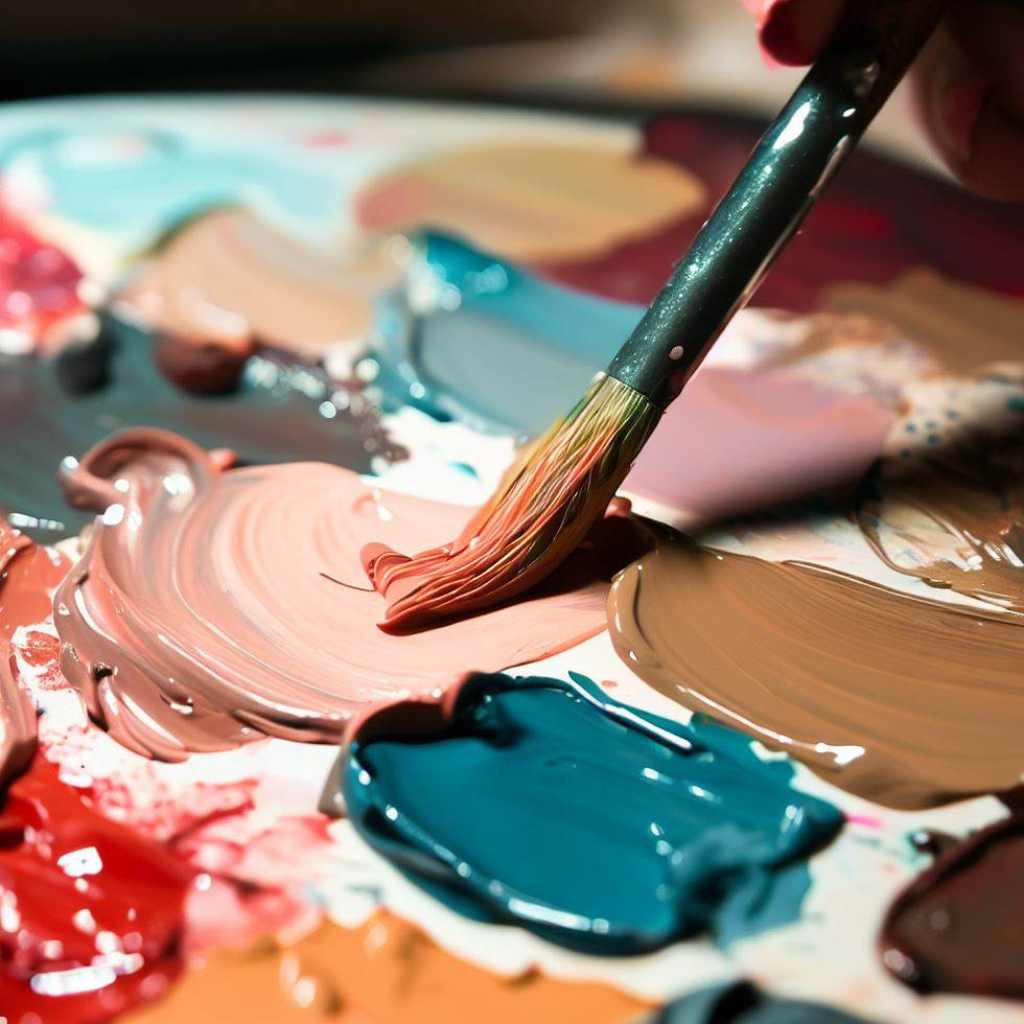
Tips and techniques for using gamblin solvent free gel
By exploring gamblin solvent free gel effectively through tips and techniques, artists can unlock new dimensions of creativity and achieve remarkable results in their oil paintings.
- Layering and glazing: Gamblin solvent free gel can be effectively used for layering and glazing techniques.
Apply thin layers of paint mixed with the gel to achieve translucent effects and build up depth and complexity in your artwork.
- Creating texture: Experiment with applying gamblin solvent free gel mixed with paint using various tools and techniques to create interesting textures in your artwork.
Explore using brushes, palette knives, or even unconventional objects to achieve unique effects.
- Blending and blending mediums: Gamblin solvent free gel can also be used in conjunction with other mediums to achieve desired effects.
Experiment with blending it with different oils or varnishes to explore new possibilities and expand your artistic range.
Comparison with traditional solvent-based mediums
Gamblin solvent free gel offers a safer and healthier alternative to traditional solvent-based mediums. Traditional mediums often contain harmful solvents that can pose health risks and require proper ventilation during use.
In contrast, gamblin solvent free gel eliminates the need for solvents, providing artists with a safer working environment.
Liquin
Liquin is a widely used medium in the realm of oil painting, renowned for its unique properties and versatility. This popular medium has gained recognition among artists for its ability to enhance the handling and performance of oil paints.
Benefits of using Liquin
- Accelerates drying time: One of the significant advantages of liquin is its ability to speed up the drying time of oil paints.
This feature is particularly beneficial for artists who desire a faster working process or need to complete their artwork within a specific timeframe.
- Enhances flow and leveling: Liquin improves the flow and leveling of the paint, making it easier to apply and manipulate on the canvas.
This quality allows for smoother brushwork and seamless blending of colors, resulting in a more professional finish.
- Increases transparency and gloss: By incorporating liquin into your oil paints, you can achieve increased transparency and a heightened glossiness in your artwork.
This quality can be advantageous when aiming to create luminous effects or emphasize certain areas of your painting.
- Allows for glazing techniques: Liquin is well-suited for glazing techniques in oil painting. Glazing involves applying transparent layers of paint over previously dried layers to create depth, luminosity, and subtle color shifts.
Liquin’s properties facilitate the application of glazes, enabling artists to achieve stunning visual effects.
How to use liquin effectively
To make the most of Liquin in your oil painting endeavors, consider the following tips:
- Start with a small amount: Begin by adding a small quantity of liquin to your paint and gradually increase the amount if needed. It’s important not to overuse liquin, as excessive amounts may affect the handling and drying characteristics of the paint.
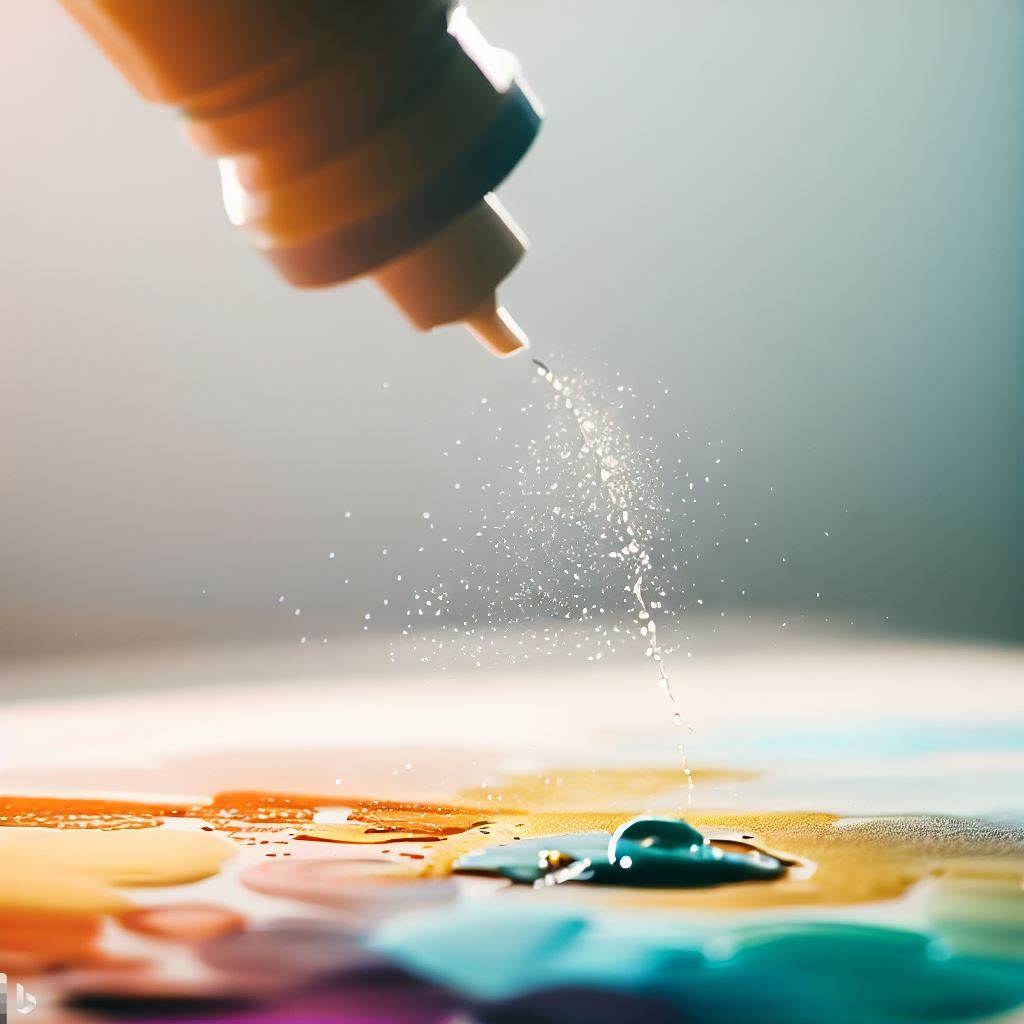
- Mix thoroughly: Ensure that liquin is thoroughly mixed with the paint to achieve a consistent and uniform application. Proper mixing prevents any streaking or unevenness in the final result.
- Experiment with different consistencies: Liquin can be adjusted to different consistencies by adding more or less medium to the paint. Experiment with various ratios to achieve the desired viscosity and flow for your painting style and technique.
Tips and techniques for using liquin
By exploring its potential through tips and techniques, artists can unlock new dimensions of creativity and achieve remarkable results in their oil paintings.
- Layering and glazing: Liquin can be effectively used for layering and glazing techniques. Apply thin layers of paint mixed with liquin to achieve translucent effects and build up depth and complexity in your artwork.
- Blending and wet-on-wet techniques: Liquin facilitates blending and wet-on-wet techniques in oil painting. Utilize its properties to seamlessly blend colors together or work with wet paint for smooth transitions and atmospheric effects.
- Experiment with different brushwork: Liquin’s enhanced flow and leveling properties enable artists to experiment with different brushwork techniques. Explore creating bold strokes, fine details, or expressive textures using various brushes and application methods.
Comparison with traditional oil mediums
Liquin offers several advantages over traditional oil mediums. Unlike traditional mediums that typically require longer drying times, liquin accelerates the drying process, allowing artists to work more efficiently.
Additionally, liquin enhances flow and leveling while increasing transparency and gloss, offering improved control and versatility in the painting process.
Gamblin Solvent Free Gel vs Liquin: Which one is right for you?

Gamblin solvent free gel vs liquin are two popular mediums in the realm of oil painting, each offering unique advantages. To determine which one is right for you, consider the following:
Understanding your painting style and preferences:
Reflect on your preferred painting techniques, style, and desired effects. Consider whether you lean towards textured brushwork or smoother, leveled surfaces.
This self-awareness will help you assess which medium aligns better with your artistic goals.
Experimentation and finding the perfect fit:
It’s essential to experiment with different mediums to find the perfect fit for your artistic practice. Try using both gamblin solvent free gel and liquin separately in your paintings.
Observe how they affect the drying time, handling, and overall appearance of your artwork. This hands-on approach will allow you to make an informed decision based on your personal experience.
Choosing the Right Medium for Your Painting
When it comes to oil painting, selecting the right medium can greatly impact the outcome of your artwork. The medium you choose will influence factors such as drying time, texture, transparency, and overall handling.
To make an informed decision, there are several factors to consider.
Factors to consider when selecting a medium
- Desired drying time: Consider whether you prefer a faster or slower drying time. Some artists appreciate the quick-drying properties of certain mediums, while others prefer more extended working periods to blend and manipulate their paint.
- Handling and texture: Think about the kind of brushwork and texture you want to achieve in your painting. Some mediums maintain brushstrokes and body, while others provide smoother, more leveled surfaces. Assess which qualities align with your artistic vision.
- Transparency and gloss: Determine whether you want your colors to be more transparent or have a glossy finish. Different mediums can enhance transparency and glossiness, allowing you to achieve specific visual effects.
Frequently Asked Questions
- Can Gamblin Solvent Free Gel be mixed with Liquin?
Yes, Gamblin Solvent Free Gel and Liquin can be mixed together. Artists often experiment with combining different mediums to achieve desired effects and customize their painting process. By mixing Gamblin Solvent Free Gel and Liquin, you can create a unique blend that incorporates the benefits of both mediums, such as maintaining body and brushstrokes while accelerating drying time.
- Can Gamblin Solvent Free Gel and Liquin be used with other mediums?
Absolutely! Both Gamblin Solvent Free Gel and Liquin can be used with other mediums. Artists often incorporate various mediums into their creative process to achieve specific techniques or desired effects. Whether you want to experiment with different mediums or enhance the properties of Gamblin Solvent Free Gel or Liquin, feel free to explore combinations and discover new possibilities in your oil paintings.
- Are Gamblin Solvent Free Gel and Liquin suitable for all oil painting techniques?
Yes, Gamblin Solvent Free Gel and Liquin are versatile mediums suitable for various oil painting techniques. They can be used for traditional brushwork, glazing, impasto, scumbling, and other techniques. These mediums offer artists flexibility in manipulating the consistency, flow, and drying time of their oil paints, allowing for greater control and artistic expression across a range of techniques.
- Which medium is more suitable for beginners?
For beginners, Gamblin Solvent Free Gel can be a great option. It offers a slower drying time, which allows beginners more time to work with their paints and make adjustments. Additionally, Gamblin Solvent Free Gel helps maintain brushstrokes and provides a smooth consistency, making it easier for beginners to handle and control. However, it ultimately depends on personal preference and the specific goals and style of the artist.
- Can Gamblin Solvent Free Gel and Liquin be used for both thin glazes and thick impasto techniques?
Yes, both Gamblin Solvent Free Gel and Liquin can be used for thin glazes and thick impasto techniques. When used in thin glazes, they can enhance transparency, flow, and drying time. In thick impasto applications, they contribute to the desired texture and body of the paint. Artists can adjust the amount of medium used to achieve the desired effect and consistency in their glazes or impasto layers.
- Are there any color changes or alterations in the final result when using Gamblin Solvent Free Gel versus Liquin?
When using Gamblin Solvent Free Gel or Liquin, there are no significant color changes or alterations in the final result compared to using them alone. These mediums are designed to maintain the integrity and color fidelity of oil paints. However, it’s always recommended to conduct your own color tests and experiments to ensure the desired outcome, as individual pigments and their interactions can vary.
Conclusion
As the time has come to conclude the gamblin solvent free gel vs liquin debate, we dived deep into the benefits and unique qualities of these two remarkable mediums, examining their ability to maintain body and brushstrokes, increase transparency and gloss, improve flow and leveling, and even extend drying time.
We discovered that gamblin solvent free gel offers artists an avenue to express their creativity with its rich textural possibilities, while liquin captivates with its quick-drying properties and versatility in achieving various effects.
Ultimately, the conclusion lies in your hands, guided by your artistic vision, style, and desired effects. Let your brush lead the way, and may your final strokes be a testament to the artistry and mastery you have achieved.
While comparing Gamblin Solvent Free Gel to Liquin, you might be interested in learning how to make your own Liquin for a more customized painting medium.

